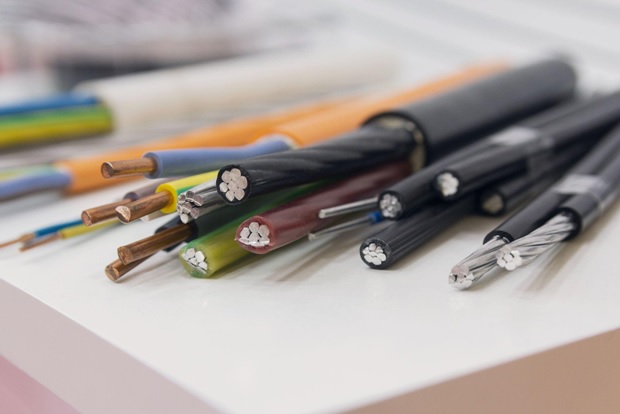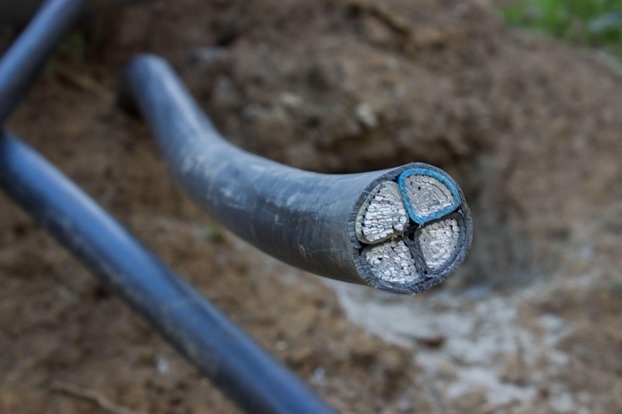Some Aluminum Wire Terminology, Explained
19th Nov 2024
The world of aluminum wire is not all that different from copper wire, and the same basic electrical principles apply.
That is, larger, thicker wires and cables can carry greater current at a higher voltage, and other similar precepts.
But still, there are physical and chemical reasons that copper vs. aluminum wires are used.
This short post will break down some of the basics, along with the terminology used in association with aluminum wire (and electrical wire in general).
Copper vs. Aluminum Wire
Both copper and aluminum wire are commonly used in electrical wiring, and each has its own virtues and drawbacks. Let’s take a closer look at copper vs. aluminum wire.
Copper, for instance, offers very low resistance, which makes it an excellent conductor, at both high and low temperature. Copper can carry a strong current at high voltage without a propensity to overheat, which makes it excellent as an electrical wire.
Copper also has a high tensile strength while remaining soft and malleable, which makes it easier to lay, as well as to draw through conduits.
With that said, copper is very heavy, which makes it cost-prohibitive to transport and install aerially. The price of copper is also a concern, as copper is also very expensive, which makes it cost-prohibitive in some installations. On top of that, copper is also highly reactive and therefore susceptible to oxidative decay.
So where copper is used in certain environments, such as in marine installations, special marine grade wire must be used, which has individually tinned copper conductors.
As for aluminum wire, it offers slightly less conductivity than copper, but it actually offers a higher conductivity to weight ratio, meaning less aluminum conductors by weight can be used to carry the same current and voltage as a comparable copper conductor.
Aluminum is also not as prone to corrosion, and as a result, sometimes aluminum wires are not insulated, relying rather on the air around them for insulation.
Aluminum is also much lighter than copper, which makes it easier to transport, lay, and draw than copper. This makes aluminum the best option in many aerial installations. For instance, aluminum triplex wire and quadruplex wire are commonly used for power distribution/service entry to residential and commercial buildings. Steel-reinforced aluminum wire is also commonly used in overhead, high-tension power lines, because they are so lightweight.
With that said, aluminum has a lower tensile strength than copper, is less physically durable, and when not installed appropriately, presents a risk of overheating.

What Are Aluminum Triplex Wire and Quadruplex Wire?
Two of the most commonly encountered grades of aluminum wire are aluminum triplex wire and quadruplex wire.
Aluminum triplex wire is a special type of aluminum wire consisting of two insulated groups or wire along with an uninsulated group of wire, all twisted around each other. The two hot legs are used for power distribution whereas the uninsulated leg is a neutral lead.
In the case of aluminum quadruplex wire, there are four conductors, three of which are insulated and live or “hot” and the fourth, which is an uninsulated neutral leg.
In the case of both of these, they are used primarily for overhead power transmission to buildings (as service entrances), both residential and commercial. Aluminum is primarily used instead of copper because it is lighter and significantly cheaper.
In some cases, aluminum triplex and quadruplex wire are supported with a steel member that adds tensile strength and prevents the wires from sagging excessively, especially in the case of wind, snow or ice loading.
What Do All Those Letters Mean?
Take a look at the 4/0 aluminum wire at the previous link. See where it’s listed that it is XHHW wire? Those letters are often used as an indicator of the type of insulator used, as well as its specifications.
In this case, XHHW stands for “cross-linked polyethylene” (noted by X) high heat rated (HH) and rated for use in wet locations (W).
Cross-linked polyethylene, also sometimes known as XLPE, is a special grade of polyethylene that offers good durability, as well as thermal and chemical resistance.
Since these cables are also HHW (high-heat, wet) rated, they can be used in areas where they will be exposed to high temperatures, as well as in wet locations.
What Is 4/0 Aluminum Wire?
Another term that is commonly applied to aluminum wire and which must be understood is gauge.
In North America, American Wire Gauge, or AWG, is used to measure the diameter of electrical conductors. It is a logarithmic standardized scale that is inversely measured. That is, the smaller the number, the larger the gauge, and the larger the number the thinner the gauge.
Gauges given by a number followed by /0 are the largest of all. For instance, the 4/0 aluminum wire at the previous link has an OD of .59”, making it more than half an inch thick. As you could expect, the thicker the gauge of the wire, the more current and higher voltage it can carry.
What Is Aluminum Wire Commonly Used for?
Aluminum wire is commonly used in applications in which it would be cost-prohibitive to use copper. For instance, aluminum wire is commonly used as triplex and quadruplex wire for power service entry to buildings. It is also commonly used for overhead power transmission because copper would not only be too expensive, but too heavy. In addition to being cost-effective, aluminum wire is sometimes used in environments in which the risk of corrosion to copper would be too great to support its use.

Shop a Wide Variety of High-Quality Aluminum Wire Here
Looking for more information on aluminum wire? Or are you simply here because you need high-quality aluminum triplex or quadruplex wire? Whether you want to know the relative virtues of copper vs. aluminum wire or you need to make a bulk purchase to support a project, we can help.
Shop our specialty electrical wire and cable at the previous link and if you need help with anything get in touch with us directly at Sales@EWCSWire.com or at 800-262-1598.

